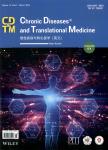Artificial intelligence-Developments in medicine in the last two years
Artificial intelligence-Developments in medicine in the last two years作者机构:Department of Neurology GOU VPO Bashkir State Medical University Ufa 450077 Russia Department of Interventional Cardiology GBUZ Republic Heart Centre GOU VPO Bashkir State Medical University Ufa 450077 Russia Ufa State Aviation Technical University Ufa 450077 Russia Mathematic Department Ufa State Oil Technical University Ufa 450077 Russia Ufa State Aviation Technical University Institute of Aviation Technological Systems Ufa 450077 Russia
出 版 物:《Chronic Diseases and Translational Medicine》 (慢性疾病与转化医学(英文版))
年 卷 期:2019年第5卷第1期
页 面:64-68页
核心收录:
学科分类:10[医学]
主 题:Artificial intelligence Clinical decision Machine learning Scientific tools Healthcare Deep learning
摘 要:Dear Editor , Artificial intelligence (AI) is the theory and development of computer systems that are able to perform tasks that normally require human intelligence, such as visual perception, speech recognition, decision-making, and translation between languages. There are some knowledge and thinking tasks that humans cannot perform as perfectly as they wish to or should be able to. These tasks are closely related to security and responsibility. A multitude of cognitive distortions have been well explored1 and present opportunities to use AI for powerful assistance in thinking tasks. The core of the Industrial Revolution 4.0 is the adoption of AI methods. This revolution has affected all aspects of human activities and medicine is one example. AI systems can usually include formal algorithms for subtasks that can be solved using logic, for example, a decision tree. The task solution process moves from logic point to logic point similar to a train on a railway. These algorithms are fast and have the ability to explain.



